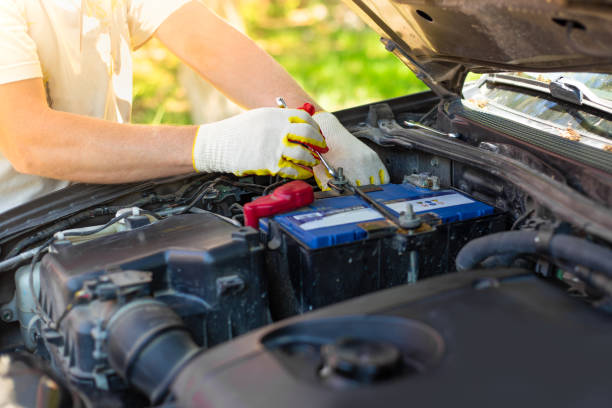September 1, 2024
How should I preserve a car battery while the car is in storage?
To preserve a car battery while your car is in storage, you can follow these steps to keep it in good condition:
- Disconnect the Battery: If you expect to store the car for more than a couple of weeks, disconnect the negative terminal of the battery. This prevents parasitic drain from electronic components like clocks or alarms.
- Use a Battery Maintainer or Trickle Charger: These devices provide a low, steady charge to the battery, ensuring it doesn’t lose power over time. It’s a safe way to keep the battery fully charged without overcharging it.
- Store the Car in a Cool, Dry Place: Heat can accelerate battery discharge, so storing the car in a cool and dry environment helps slow the process. Avoid extreme temperatures, especially very hot environments.
- Check Battery Water Levels (for non-sealed batteries): If your battery is not a sealed type, check the water levels in the cells, and add distilled water if necessary to keep the plates submerged.
- Clean the Battery Terminals: Corrosion on battery terminals can cause issues when you reconnect the battery. Clean the terminals with a baking soda and water solution before storage.
- Remove the Battery from the Car (optional): In colder climates, consider removing the battery from the vehicle and storing it indoors where temperatures are more stable.
- Charge the Battery Every Few Months: If you don’t use a trickle charger, it’s a good idea to periodically check the battery voltage and give it a full charge every 1-2 months while in storage.
By following these steps, you’ll help ensure the battery remains in good condition and ready to start the car when you’re ready to take it out of storage.
Should I disconnect my car battery when in storage?
Yes, it is generally a good idea to disconnect your car battery if you’re storing the vehicle for an extended period (typically more than two weeks). Here are the key reasons why:
- Prevents Parasitic Drain: Modern cars have electronic systems (alarms, clocks, keyless entry systems) that continuously draw a small amount of power, even when the car is off. Over time, this can drain the battery completely, leaving you with a dead battery when you’re ready to use the car again. Disconnecting the battery eliminates this drain.
- Protects the Battery’s Health: Disconnecting helps prevent the battery from deep discharge, which can reduce its overall lifespan. Leaving it connected and allowing it to go dead could cause permanent damage to the battery.
- Easy to Reconnect: When you’re ready to drive the car again, reconnecting the battery is usually quick and easy. Just make sure to attach the negative terminal last when reconnecting to avoid sparking.
Exceptions:
- If you’re using a battery maintainer or trickle charger, you don’t necessarily need to disconnect the battery, as these devices will keep it charged safely while in storage.
- If your vehicle has specific electronic components that require continuous power (such as certain alarms or custom settings), disconnecting the battery might reset those, so you should be aware of any potential issues related to that.
In most cases, disconnecting the battery is a simple, effective way to protect it during storage.

